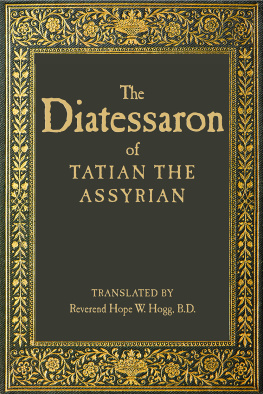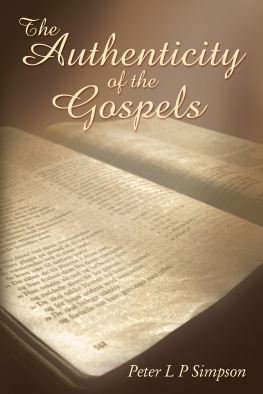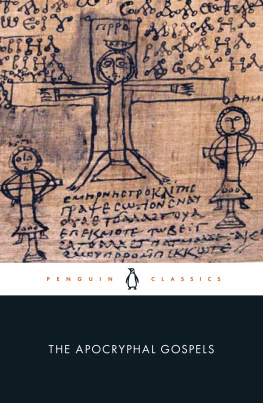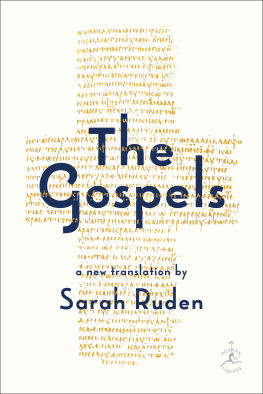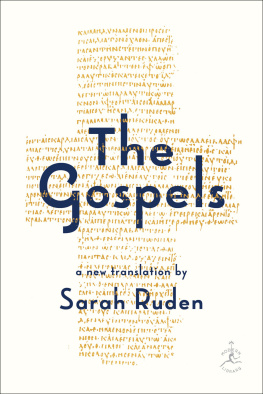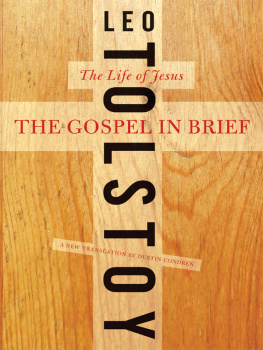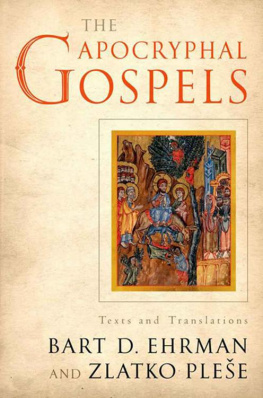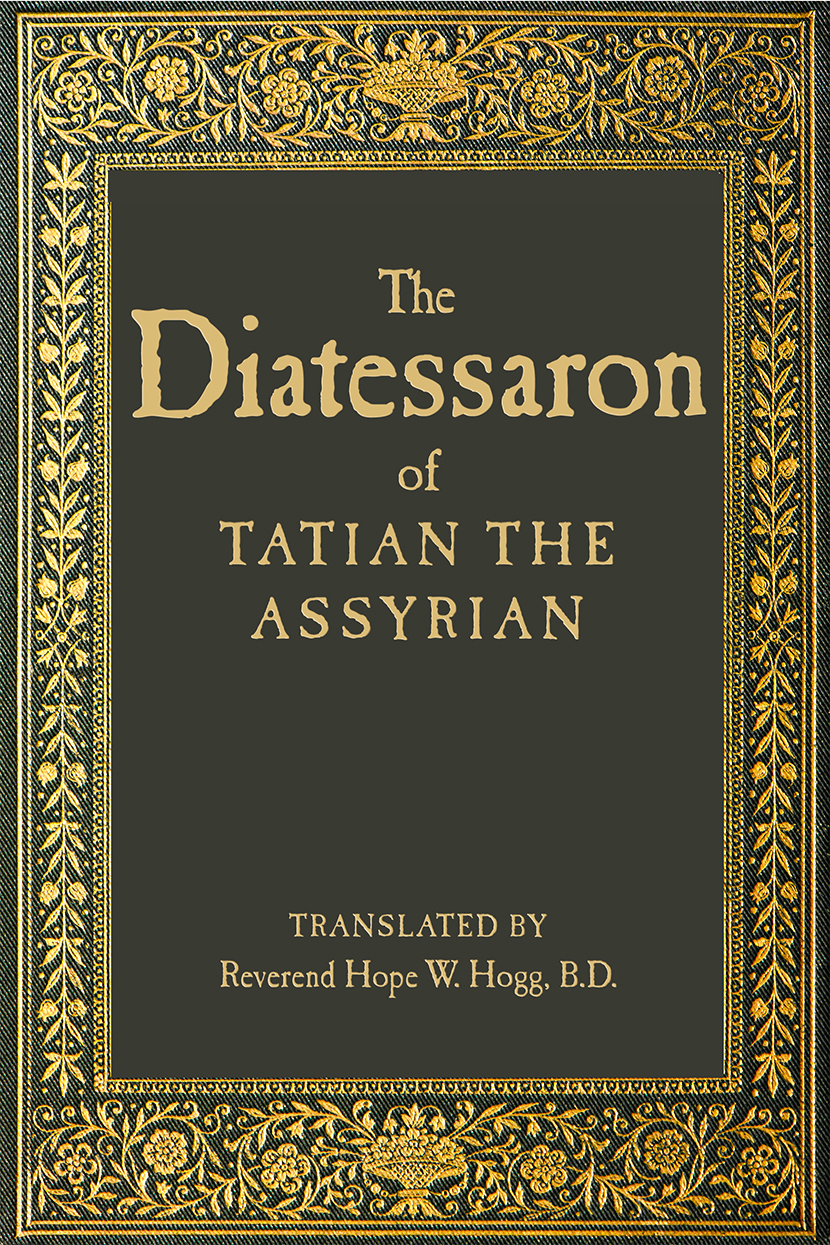Contents
Guide
The aim of the following introductory paragraphs is neither to furnish a detailed restatement of facts already known, nor to offer an independent contribution to the discussion of the problems that arise, although in other circumstances such an attempt might be made with advantage. All that is needed and practicable here is to describe briefly, if possible, the nature of the connection between the English treatise forming the next part of this volume and the ancient work known as the
Diatessaron of Tatian; and then to indicate in a few words some of the more important or interesting features of the work itself, and some of the historical and other problems that are in one way or another connected with it. 1
The Text Translated. What is offered to the reader is a translation into English of an Arabic text, published at Rome in 1888, in a volume entitled in Arabic
Diatessaron, which Titianus Compiled from the Four Gospels, with the alternative Latin title
, Tatiani Evangeliorum Harmoni, Arabice. The Roman volume consists of two partsthe text, covering a little over 209 very clearly printed Arabic pages, and a Latin half, comprising a scholarly introduction (pp. v.xv.), a Latin translation (pp. 199), and a table showing the order in which the passages taken from the gospels occur in the text. The editor is P.
Agostino Ciasca, a well known Orientalist, scriptor at the Vatican Library. 2 Former Translations. In his Introduction (p. xiv. f.) Ciasca explains that in his translation he aimed at preserving quantum, salva fidelitate, integrum fuit, indolem stylumque Clementin Vulgate. This Latin version was in its turn translated into English by the Rev. J. The MS. of Mr. of Mr.
Hills translation of the Latin of Ciasca was compared with the Arabic original by Mr. G. Buchanan Gray, M.A., lecturer in Hebrew and the Old Testament in Mansfield College, Oxford. 3 The Present Translation. The translation offered here is quite independent of either of these two. Ciascas Latin was seldom consulted, except when it was thought the Arabic might perhaps be obscured by a misprint. After the translation was completed, Hills English was compared with it to transfer Mr.
Hills valuable system of references to the margin of this work, and to lessen the risk of oversights passing the last revision unnoticed. In two or three cases this process led to the adoption of a different construction, and in a few of the more awkward passages a word was borrowed as being less harsh than that which had originally been written. Speaking generally, the present version appears to differ from Mr. Hills in adhering more closely to the original. 4 The Arabic Text. Only two Arabic MSS. are known to exist.
Ciasca tells us (p. xiv.) that he took as the basis of his text that MS. which is more careful in its orthography, the Cod. Vat. Arab. 14. 14.
He, however, printed at the foot of the page the variants of the other MS., and supplied from it two lacun in the Cod. Vat., 5 The Arabic MSS. Unfortunately, the present writer has not had an opportunity of examining these two MSS.; but they have been described at some length by Ciasca; Codex XIV. in Pitras Analecta Sacra, iv., 465 ff., and the other codex in the volume with which we are dealing, p. vi. ff. I.
The former, which we shall call the Vatican MS. (in Ciascas footnotes it is called A), was brought to the Vatican from the East by Joseph S. Assemani in some respects a better text, though it is worse in its orthography than the Vatican MS. 6 Condition of the Arabic Text. Ciascas text does not profess to be critically determined, for which purpose a more careful study of each of the MSS. and an estimate of their respective texts would be indispensable. is supposed by Ciasca to be a century or two later than the Vatican MS. it is clearly not a copy of the latter, for not only does it sometimes offer more original readings, but, as we shall see, its text in some points coincides more exactly in scope with the original work. it is clearly not a copy of the latter, for not only does it sometimes offer more original readings, but, as we shall see, its text in some points coincides more exactly in scope with the original work.
The list of various readings supplied by Ciasca, and the text of the copy from which our two MSS. are descended may already have suffered from contact with other versions; while the special activity of the thirteenth century may have left its mark in some places on the text of the Borgian MS., supposing it to be chronologically the later. 7 Origin of the Arabic Text. If some of the uncouthness of the Arabic text is due to corruption in the course of transmission, much is also due to its being not an original work, but a translation. That it is, in the main, a translation from Syriac is too obvious to need proof. hardly suffice to refute this assertion. is a late witness, and although it most probably preserves a genuine tradition as to the author of our work, its statement need not therefore necessarily be correct in every point. 8 The Arabic Editor and his Method. Ibn-at-Tayyib (d. 1043) is a well known man, a Nestorian monk and scholar, secretary to Elias I., Patriarch of Nisibis (for references to sources see, e.g., Ciascas Introduction, p. xi. f. and Steinschneiders long note in his Polemische und apologetische Lit. in Arabische Sprache, pp. 5255). 5255).
As we are here concerned with him simply as a link in the chain connecting our present work with its original source, the only point of interest for us is the method he followed in producing it. Did he prepare an independent translation or did he make use of existing Arabic versions, his own or others? Until this question which space forbids us to discuss here, has been more thoroughly investigated, it must suffice to say that in view of the features in the present text that have not yet been shown to exist in any other Arabic version, it is still at least a tenable hypothesis that Ibn-at-Tayyibs MS. constituted to a considerable extent a real translation rather than a sort of Arabic parallel to the Codex Fuldensis (see below, 12). 9 The Syriac Text Translated. The eleventh century MS. of Ibn-at-Tayyib, could we reach it, would bring us face to face with the more interesting question of the nature of his Syriac original. states, probably copying the statement from its exemplar, that this was a. Syriac MS. in the handwriting of Isa ibn-Ali al Motatabbib, pupil of Honain ibn Ishak. in the handwriting of Isa ibn-Ali al Motatabbib, pupil of Honain ibn Ishak.
This Honain was a famous Arabic physician and medical writer of Bagdad (d. 873), whose school produced quite a number of translations and translators, among whom Ibn-Ali, supposed to be identical with the Syriac lexicographer of the same name, is known to have had a high place. The Syriac MS., therefore, that Ibn-at-Tayyib translated takes us back to about the year 900. But the Subscription to each of our mss. states that the work ended is the gospel called Diatessaron, compiled from the four gospels by Titianus; while the Introductory Note to the Borgian MS. adds that this Titianus was a Greek.
The next step, therefore, is to inquire whether any traces exist of such a Syriac work, or any statements by which we can check the account just given of it. 10 Other Traces of a Syriac Text. No copy of a Syriac Diatessaron has yet been shown to have survived. The value of these extracts is apparent, for they take us back one generation earlier than Ibn-at-Tayyibs Syriac exemplar. More important still, they do not entirely agree with the text of our Arabic version. To solve the problem thus raised, we must examine some of the statements about the

